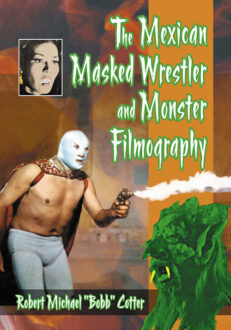Subtotal: $24.99
American Self-Taught Art
An Illustrated Analysis of 20th Century Artists and Trends with 1,319 Capsule Biographies
Original price was: $75.00.$59.99Current price is: $59.99.
In stock
About the Book
Self-taught art (or outsider art or folk art) is made up of paintings, drawings, sculptures, assemblages, outdoor constructions and other items created by people with little or no formal training who produce (or at least began by producing) art without regard to mainstream recognition or the marketplace. There are now several periodicals, numerous yearly auctions, and dozens of museums and galleries devoted to the field.
This analysis of the art form in 20th century America begins by explaining the emergence of self-taught art, and introducing the reader to key aspects. The second chapter studies trends, by gender, race and region, and examines such issues as education, employment and the circumstances under which artists became active.
The main body of the work consists of 1,319 biographies of artists—dates, location, origins, education, employment, style, media, themes and unusual characteristics. Another section deals with 44 categories of self-taught art including media (collage, painting, pottery, relief carving, sculpture, etc.); styles (abstract, rudimentary, surrealistic…); and themes (such as animals, death, humor, politics, religion, vehicles and words).
About the Author(s)
Bibliographic Details
Florence Laffal and Julius Laffal
Foreword by Tom Patterson
Format: softcover (7 x 10)
Pages: 368
Bibliographic Info: 125 photos (45 in color), tables, chronology, bibliography, index
Copyright Date: 2013 [2003]
pISBN: 978-0-7864-7519-3
Imprint: McFarland
Table of Contents
Acknowledgments ix
Foreword by Tom Patterson 1
Introduction 5
1. The Emergence of American Folk Art in the Twentieth Century 9
2. Comparative Studies of Self-Taught Art 20
3. Capsule Biographies of Artists 38
Between pages 154 and 155 are 32 color plates containing 45 images
4. Selected Examples: Media, Style, Subjects and Themes 155
5. Discussion and Integration of Findings 264
Appendix: Chronology of Events 291
Bibliography 301
Index 309
Book Reviews & Awards
“Valuable… A comprehensive history of self-taught art’s growth into a widely studied and collected genre is written in a clear and friendly style…recommended”—Library Journal; “recommended. All levels”—Choice; “brilliant…a must…writing is accessible, clear and well-crafted…many commonly held assumptions and myths abouth self-taught artists are dispelled…most important”—Folk Art Messenger; “the Laffals have done a wonderful job covering this new and exciting field of art…a must have”—ARBA; “excellent…valuable for identifying hundreds of less famous artists who are seriously collected by lovers of this coveted style of art””—Catholic Library World; “useful…substantial…informative…well-composed…worth adding to the Outsider Art aficionado’s reference shelf”—Raw Vision; “important…recommended”—Art Documentation; “this analysis by two of the greatest experts of the outsider art world begins by explaining what self-taught art is. Then comparative studies are presented of trends in self-taught art, divided by gender, race and region, and examining such issues as education, employment, and personal circumstances”—Yale Psychiatry.

 Arbitration Strategy for Labor and Management Advocates
Arbitration Strategy for Labor and Management Advocates 




